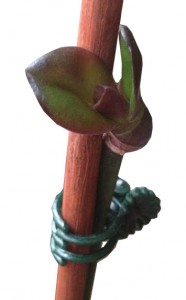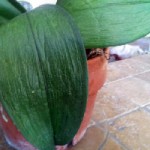Top Signs That Your Orchid is Unhealthy
Author: Melanie Dearringer2 Comments

A healthy orchid is a happy orchid. These signs are indication that you may need to alter the level of care you are providing your orchid.
- You’ve developed a large plant but no or few flowers or spikes. This is usually a sign of environmental issues. Check lighting, temperature, etc.
- There hasn’t been a bloom in over a year. The most common reason an orchid fails to produce blooms is due to inadequate lighting.
-

-Orchid keiki
A little plant is growing on top of the flower stem. These smaller plants are called keikis and are exact replicas of your original plant. While not all keikis are produced out of stress, many orchids will produce keikis as a last ditch attempt at survival.
- Your orchid’s leaves have developed brown tips. This can be caused by a few things. Over-fertilization and fungal disease are common causes of browning leaves. Check out our Orchid Fertilizer Guide for more information on how to properly feed your orchid.
- The leaves are very dark green in color. While dark green leaves are often a coveted feature of an indoor plant, if an orchid displays dark green leaves it means it is not receiving the proper amount of light. Healthy orchid leaves are an olive green.
- Your orchid’s leaves appear to be sun-damaged; yellow, calloused in the middle of the leaves. Orchids prefer indirect light. Exposure to harsh, direct sunlight can cause leaf damage.
-

-Dehydrated leaf
Your orchid’s leaves are wrinkly or leathery in appearance. This is dehydration caused by a watering issue. Either the plant has simply not been provided with enough water or it has been over-watered and the roots have rotted leaving no way for the orchid to absorb the proper amount of moisture.
- The roots have turned from white/thick/greyish green to shriveled. This is most likely a watering issue. If an orchid is not receiving the proper amount of water, the roots can begin to shrivel.
- Your orchid has no roots. An orchid’s root system is tasked with water and nutrient absorption. It is possible to save an orchid without roots, but it requires a great deal of patience.
Featured image photo credit: -Reji via http://www.flickr.com/photos/rejik/12616243933/
2 Responses to “Top Signs That Your Orchid is Unhealthy”
Leave a Reply


Ask an Expert
Questions about orchids?
Our experts love a challenge!
Photo of the Week
Submit your photo to be featured on the blog!
More Photo of the Week Winners
Submit Photo








One of my orchids has developed wrinkled leaves. It’s got 7 buds on it, but I’m worried about the wrinkles.
This could mean you are either over watering or under watering. Check the roots to see which it is. (White/green hard roots are healthy ones, soft brown/black roots are rotted from too much water).